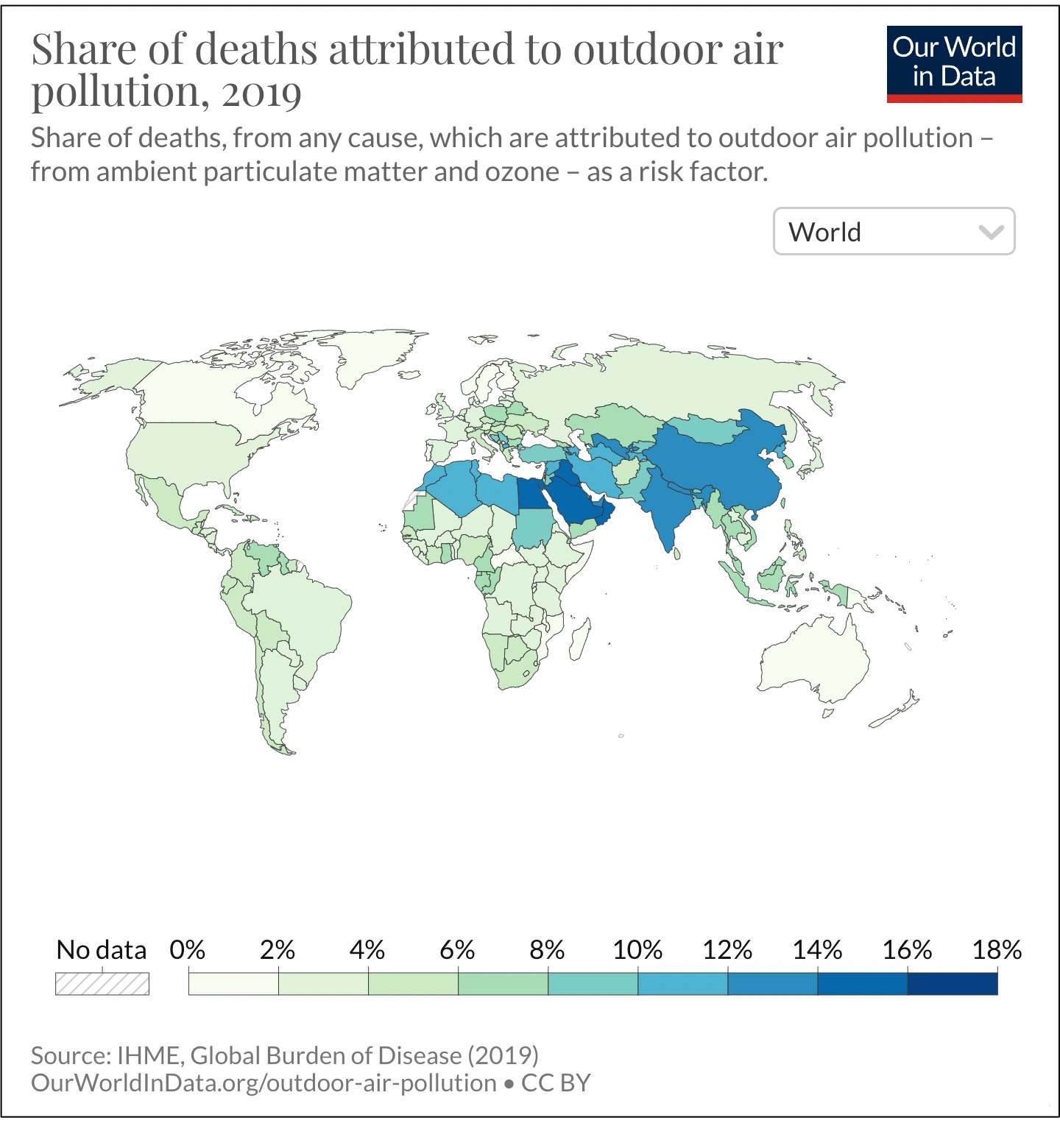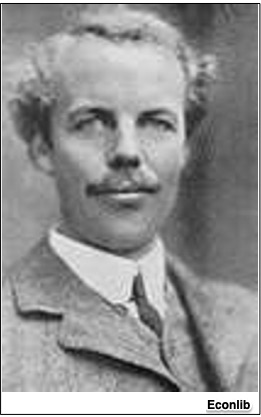On Wednesday, walking down Madison Avenue between 73rd and 33rd streets, I was surrounded by people with masks, a smoky smell, and an eerie yellow haze. While the Yankees-White Sox game was postponed and Google told its employees to work from home, the headlines explained that NYC was #2 for the world’s worst air quality. Instead of an unhealthy 160 (and beyond), Manhattan’s normal air score is a vibrant 50.
So yes, the reason for the air quality plunge was shifting Canadian wildfire smoke. But the phenomenon is much bigger.
Let’s take a look.
The Economic Impact Of Air Pollution
In a list of the global number of deaths by risk factor, air pollution is #3, Behind high blood pressure and smoking, air pollution caused 6.67 million deaths in 2019. As for outdoor air pollution, the total was estimated at 4,506,193.
We can use a 2016 OECD report to summarize the direct and indirect cost of outdoor air pollution. Focusing on health, researchers looked at expenditures, labor productivity, and crop yields:
The burden though is unequal. You can see below that middle-and low-income countries have the highest mortality rates:
Essentially though, we are talking about how the reallocation of our land, labor, and capital has direct and indirect costs. The direct impact takes us to diminished labor productivity, increased health spending, and the delayed change in crop yields. It also relates to a country’s development stage and its demography. The low-to-middle income countries in Asia and Africa, and especially North Africa have considerably more pollution exposure. For example, exposure levels in Sweden are 40 times less than for North Africa. In addition, countries like China with older populations have more exposure than a more youthful India.
Still though, shown by recent outdoor pollution levels in New York, the conditions that affect air quality impact all of us. As a result, we can ask which mitigation policies have been most successful. That takes me to a May 2023 NBER paper.
Economic Solutions
Called carbon pricing, we could name carbon markets or carbon taxes as two ways to cap carbon emissions. By carbon markets, we are referring to emission permit trading. Overly simplified, the market lets entities that emit less than allowed sell the right to pollute more to others. Together, the totals result in a “cap and trade” emissions ceiling. By contrast, taxes are taxes. They are a money cost that a firm pays when its emissions exceed a pre-determined level. Alternatively, they are a money incentive that limits pollution.
When researchers looked at EU ETS (European Union Emissions Trading System), they concluded that “cap and trade’s” higher prices and pollution taxes decreased emissions. However, especially citing oil, they said that the carbon market boosted prices elsewhere. One result was lower GDP growth and higher unemployment. By contrast, they found that taxes could be fiscally “recycled.”
Their point was that economists’ preference for “cap and trade” should be offset by a closer look at the impact of carbon taxes.
And that takes us to Arthur Pigou.
Our Bottom Line: Pigovian Taxes
Used to reduce carbon emissions that contribute to outdoor air pollution, one convincing approach came from economist Arthur Pigou (1877-1959).
His solution was a tax that was win/win. When we paid the tax, the revenue could be “repurposed. It could lower other tax rates or spent on fiscal targets like health.
But, as always, decisions require tradeoffs. We get more revenue and less pollution for less production. As we saw, recent research concluded that the tradeoff is less costly than for cap and trade mitigation.
So, we just have to select the benefits that we prefer to retain when we make our choices.
Returning to our title, what did New York teach us? We saw that everywhere, outdoor air pollution can have an economic impact.
My sources and more: Although this OECD report is from 2016, its framework remains relevant. From there, Our World in Data was the ideal complement as was this paper on pollution reduction policies. Then, referring to New York, CBS News told the immediate impact.









